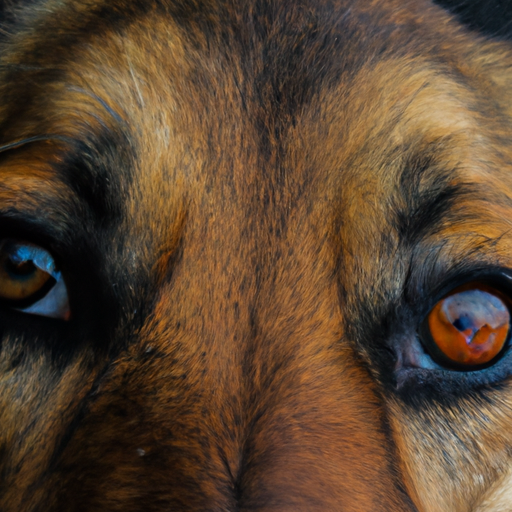Understanding Redness in Dog’s Eyes
Your dog’s eyes are windows to their soul and health. If you’ve noticed redness in them, it’s a clear signal that something isn’t right. Redness can be a symptom of various conditions, some more serious than others. Just as you would care for a child, it’s important to pay attention to these signs and take necessary action.
Common Causes of Red Eyes in Dogs
There could be numerous reasons behind your dog’s red eyes. Below are some of the most common causes:
- Allergies: Just like humans, dogs can also suffer from allergies which can cause their eyes to become red and itchy.
- Conjunctivitis: This is an inflammation of the conjunctiva, the tissue coating the eye and lining the eyelids. It’s often caused by irritants, allergies or infections.
- Glaucoma: A serious condition caused by increased pressure in the eye, leading to redness and potential vision loss.
- Dry Eye: Known medically as Keratoconjunctivitis Sicca, this is a condition where the dog’s body doesn’t produce enough tears, leading to dry, red eyes.
- Injury: Any trauma to the eye can cause redness.
How to Treat Red Eyes in Dogs
The treatment for your dog’s red eyes largely depends on the underlying cause. Below are some general treatments:
- Allergies can be managed with antihistamines and avoiding the allergen.
- Conjunctivitis might require antibiotic eye drops.
- Glaucoma is usually treated with eye drops to reduce pressure, and in severe cases, surgery might be required.
- Dry Eye can be managed with artificial tears and sometimes surgical intervention.
Remember, always consult a vet before starting any treatment.
When to Seek Veterinary Help
If you notice any of the following signs, it’s time to take your furry friend to the vet:
- Persistent redness
- Evidence of pain (squinting, pawing at the eye, etc.)
- Changes in behavior
- Loss of appetite
- Changes in vision
Preventing Red Eyes in Dogs
Prevention is always better than cure. Here are some steps you can take to prevent red eyes in your dog:
- Keep your dog’s living area clean to minimize allergens.
- Regularly check your dog’s eyes for any signs of inflammation or injury.
- Make sure your dog has a balanced diet to boost their immune system.
Frequently Asked Questions
Q: Can I use human eye drops for my dog?
A: No, human eye drops may not be suitable for dogs and can potentially cause more harm. Always consult a vet before using any medication.
Q: How long does it take for a dog’s red eye to heal?
A: It depends on the cause. Some conditions can clear up in a few days, while others might take weeks or even require surgery.
Q: Can red eyes in dogs be prevented?
A: While not all causes can be prevented, maintaining good eye hygiene and a clean environment can reduce the risk of many eye conditions.
Q: Is red eye in dogs a sign of aging?
A: Not necessarily. While some eye conditions are more common in older dogs, red eyes can occur in dogs of any age and should always be checked by a vet.
Remember, as a caregiver, your dog’s health is in your hands. Stay informed, stay vigilant, and your canine companion will thank you.



